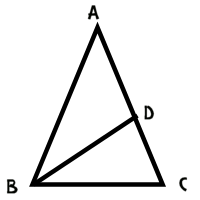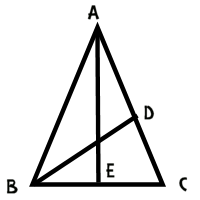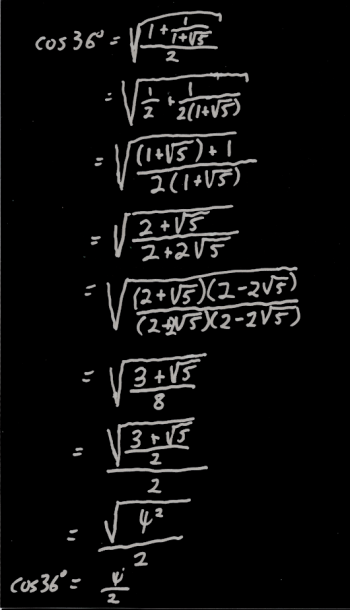Ask Professor Puzzler
Do you have a question you would like to ask Professor Puzzler? Click here to ask your question!
First of all...sorry about the click-bait title for this post. You'll see why in a minute.
Second...today I'm not answering a question from a visitor; I'm putting on my cranky-old-man hat and griping about something that concerns me deeply.
Yesterday New York Times had an article in which President-Elect Trump's aides said that he was considering (once in office) spending his weekdays at the White House, but on the weekends living at either his Trump Tower, his golf course in NJ, or his Mar-a-Lago estate.

OccupyDemocrats then did what any good clickbait site would do - they grabbed a couple sentences from the news report, built conclusions from it, and gave it a sensational (and inaccurate) headline: "Trump just announced he won't live in the white house full time, wants to golf and relax."
If you don't see a difference between what NYT reported and what OD reported, think it through very carefully - I think you'll see that there are important differences. NYT said it's what he's considering; OD said it's what he has announced. NYT simply stated where he was considering living on the weekends; OD made assumptions about what he would do while he was there. To make it even better, they found a nice picture of Mr. Trump golfing, to help add to the overall impression of the headline.
Certainly, I think it's possible, based on all that we know of him, that Donald Trump may be expecting to take a vacation every weekend, but that is not what his staff said, and to declare it as fact is nothing short of dishonest.
Of course, OccupyDemocrats is not alone in this kind of non-reporting. ConservativeTribune, WesternJournalism, USUncut, and many others, are guilty of this as well. The prevailing idea of journalism seems to be: find a news report on a "respected" news site, grab a sentence or two out of context, sensationalize it, and then give it an even more sensational headline in order to get people to click-through from social media.
I used to waste so much time reading Conservative Tribune articles my friends shared on social media, and researching the context of whoever they quoted, so I could tell my friends whether the article was false. Eventually, I realized that, for my own sanity, I needed to block this site from my facebook feed (notice, by the way, that I refuse to call it a newsfeed). I haven't seen a CT article in months, and I consider my life to be very much enriched for the lack.
So here's where things get really ugly, because we're going to talk about site popularity. A few weeks ago, Alexa.com posted in their statistics that this site (TheProblemSite.com) has broken into the top 100,000 most popular sites in the country. Using the estimate that there are a billion websites in the world, this puts us in the 99.99 percentile among US web users. I was pretty excited about that. But...that same site puts OccupyDemocrats in the top 1000 (99.9999 percentile), and ConservativeTribune at...are you ready for this? #52. There are only 51 websites in the world that are more popular than CT among US visitors, according to Alexa. That puts them at 99.999995 percentile.
Alexa says that CT has about 1.8 million visitors every day, and about 100 million page views every month.
In one month, CT gets 19.2 million UNIQUE visitors (96.7% of which are from the US). Unique means, if I visit twice in one month, I only get counted once. So about 6% of the US total population is visiting CT each month, and presumably assuming they've received a dose of news for the day. That's just ONE of these sites. What do you suppose the percent would be if we included ALL the sites like that (both the conservative ones and the liberal ones), and not just CT?
And that's just the people who actually click a link somewhere to visit their site. How often have you scanned your facebook feed and seen a headline from one of these sites and moved on without clicking? You're a person who has been "reached" by one of those sites, who does not count in their "reach" statistics. Did you assume you were looking at a news headline when you scrolled past it? Did you assume it must be true?
We complain all the time about "the media," but we don't have a whole lot to complain about if we're getting our news from entertainment sites instead of news sites. It's not much wonder we've become so divided and divisive if, after choosing sides, we gravitate toward the most extreme and dishonest sources to get our information.
I get that all news sources are biased, in the sense that they don't just give us facts, they also make choices about which facts are significant enough to be reported, and also give analysis of what they think the facts "mean" in the grand scheme of things. But biased is a whole different league from un-fact-checked click-bait that exists to serve as an echo chamber for people who already know what they think about everything.
Let's make a commitment. It's not easy, but it's only three steps:
- Begin a daily mantra: "I saw it on social media, so it's probably not true. I saw it on social media, so it's probably not true. I saw it on social media, so..."
- Every time you see a new "news" source, carefully research the first three articles you see from them, and if you can find even one blatantly dishonest statement in those articles, block the site from your social media.
- At the same time, explain to your friend WHY you're blocking the site they just shared. To make it easy, of course, you're welcome to share this article - we won't complain!
The truth is, sites like this aren't breaking the internet; they are breaking the nature of political discourse, and we are complicit. Yes, they are culpable, but so are we, every time we mistake an entertainment site for a news site. Let's start doing better.
Update, Nov 15, 2016 Cheyanne wanted some elaboration on #2 - How do you fact check? What do you compare to, considering how biased everything is? Here is my response to her:
There are a few different things you can do. In the case of the example above, I went to NYT, which is the site that OD quoted, and it was easy to see that they were simply taking what NYT reported and misrepresenting it. That's not to say NYT ISN'T biased, but when you find a site that deliberately misrepresents what they've said, you know that site isn't just biased, but downright dishonest.
Also, I often find articles that have short snippets of speeches, and I'm always suspicious, and go find a transcript (or video) of the ENTIRE speech, so I can find the quote in context, to see if the site is treating it fairly. For example, the number of times I've found conservative click-bait sites guilty of deliberately taking Obama quotes out of context is both embarrassing (speaking as a conservative) and appalling (speaking as a human being who cares about truth).
I also make use of custom date searches in search engines. For example, recently, there's been this thing floating around that Kurt Cobain predicted the rise of Trump. I grabbed a phrase from the supposed Cobain quote and put it into google, with quotes about it. Then I clicked the "tools" link, and "Custom date Range" to tell it I only want results from Jan 2000 - Dec 2014. Google tells me there are no results. Turns out that quote first showed up in 2015, which is a problem for Cobain, who has been dead since 1994.
Question: an arithmetic mean of two numbers is always between the two numbers being averaged. Is this also true of harmonic means and geometric means?
Yes, it is. Let's take a look at both types of means, and see if we can figure out why. In each case we'll make the assumption that we're taking the mean of two positive, distinct numbers. Positive, because goeometric means and harmonic means are generally defined to be over the set of positive reals, and distinct, because having non-distinct numbers makes the mean equal to the original number, which isn't terribly interesting.
Geometric Mean
The geometric mean is the square root of the product of the two numbers. So if the numbers are a and b, then the geometric mean is SQR{ab}.
We will say, without loss of generality, that the two numbers are a and b, with a < b.
Multiply both sides of the equation by b:
ab < b2
Taking the square root of both sides gives SQR{ab} < b
Similarly, if we multiply the first equation by a, we get:
a2 < ab, or a < SQR{ab}
Therefore, a < geometric mean < b.
Harmonic Mean
The harmonic mean is the reciprocal of the average of the reciprocals, or 2ab/(a + b). Again, we'll assume, without loss of generality that a < b.
Multiply both sides of this equation by a, and then add ab:
a2 + ab < 2ab
Now factor the left side:
a(a + b) < 2ab.
Finally, divide both sides by (a + b):
a < 2ab/(a + b).
We can repeat the process on the other side:
a < b
ab < b2
ab + ab < b2 + ab
2ab < b(a + b)
2ab/(a + b) < b
Therefore, a < harmonic mean < b
Deepak from Kanpur, India, asks the following question (edited for clarity):
In the sentence "I am a good writer," how does the meaning change based on which word you emphasize?
Well, Deepak, that's a great question! It turns out that you could say this sentence in several different ways, and each way of emphasizing the words gives a slight tweak to the meaning. To answer you, I'll mark the word that's emphasized by marking it off with asterisks. Beneath each sentence, I'll provide an explanation. In each case, the emphasis implies that the speaker is, in some way, disagreeing with what a previous speaker has said.
*I* am a good writer.
This sentence, with the emphasis on the subject, suggests that someone has previously made a statement implying that it was someone else who is a good writer. For example, if someone is comparing you to Mark, and says that Mark is a good writer, you would emphasize "I" to indicate that you're disagreeing with their conclusion is wrong about which of you is a good writer.
I *am* a good writer.
In this case, it's the verb you are emphasizing. What's the opposite of being a good writer? NOT being a good writer. So presumably, someone just told you that you are not a good writer, so you emphasize "am" in order to disagree with them.
I am *a* good writer.
Emphasizing an indefinite article like "a" is a strange choice under most circumstances, but I can imagine a circumstance where you might do that. You have just published your first novel, and an adoring (and maybe slightly crazy) fan says to you that you are "THE good writer." In other words, suggesting (hyperbolically) that you are the only good writer in the whole world. You disagree with that designation, and graciously point out to your fan that you are only one of many good writers.
I am a *good* writer.
Here you emphasized an adjective. So maybe someone just used a different adjective to describe your writing skills. Maybe they said, "You're a fantastic writer," and you wanted to dampen their enthusiasm by indicating that you're just good, but not fantastic. Or maybe they said you're a lousy writer, and you want to defend your skills by saying that you're a good writer.
I am a good *writer*.
In this case, it's likely that someone said that you're good at something else. Maybe they thought you illustrate children's books, when in reality you write them. Or maybe they thought you were a carpenter, but you're actually not. However, the fact that your sentence has the word "good" in it, suggests that the person speaking thought you were good at whatever it was that they thought you do. "You're a good illustrator." "No, I'm a good WRITER."
And there you have it - a five word sentence, with five different ways of emphasizing the words! Each one has a slightly different meaning, because each one is a response to a slightly different situation. And if there is no surrounding context - if you were just announcing this into the silence - you probably wouldn't emphasize any of the words.
A visitor from Nigeria asks, "What is the different between aceleretion and velocity?"
Acceleration and velocity are two quantities that we deal with in the field of Physics. They are related, but quite different concepts.
Let's start by talking about something acceleration and and velocity have in common. They are both vectors. Back when I was in school, students never heard of vectors until they hit high school Physics class, but nowadays, most kids learn what a vector is much earlier than that. And they don't learn it at school. They learn it while watching the movie "Despicable Me."

The character Vector announces to Gru that his name is vector because, "I commit crimes with both direction and magnitude."
A vector contains two pieces of information - a size (magnitude) and a direction. Velocity and acceleration are both vectors.
Another way in which velocity and acceleration are similar: they both relate to the motion of an object.
Velocity is a way of defining the motion of an object. It can be described as a speed and direction of motion. For example, a car is traveling at 60 mph East. 60 mph is the magnitude, and east is the direction. I'm in an elevator that is going down to the first floor at a speed of 5 m/s. 5 m/s is the magnitude, down is the direction.
So what is acceleration? Acceleration is the rate at which the velocity is changing. It is also a vector, so it also has a magnitude and a direction. For example, In the elevator example above, if the elevator had an acceleration of 1 m/s2up, that would mean that every second, the speed of the object is decreasing by 1 m/s. So after one second, the elevator would be traveling at 4 m/s. After two seconds, it would be traveling at 3 m/s. And after five seconds, it would be standing still.
On the other hand, if the elevator had an acceleration of 1 m/s2 down, the elevator would be speeding up.
If the cable on the elevator broke, it would have a downward acceleration of 9.8 m/s2. As you might imagine, that would be downright terrifying. After one second, the elevator would have a velocity of 14.8 m/s down. After two seconds, 24.6 m/s down, which is about 55 mph down. Obviously, there's a good reason to be concerned if the cable breaks!
If the elevator had an acceleration of 1 m/s2 west, that would mean that as the elevator is dropping, it's also picking up speed in a horizontal direction, which - I suppose - means it's crashing through the side of the elevator shaft!
Any time the velocity is changing, you have an acceleration. If the velocity is not changing, the acceleration is zero.
When I'm teaching acceleration to my physics class, I always ask them how many accelerators their car has. They usually respond by saying, "The gas pedal." I tell them that's not the only one. They ponder for awhile, and then realize that the brake is also an accelerator; it gives an acceleration in the opposite direction of the motion. I tell them they're still not done, and remind them that velocity is a vector, which includes a direction, and that acceleration is the rate of change in velocity. Eventually, someone realizes that the steering wheel is also an accelerator, because it changes the direction of the car.
Bianca, an 11th grader from Canada asks, "Hello, I need help in math, how can I prove that the cosine of 36 is equal to the number of gold divided by 2."
That's a great question, Bianca. For anyone who doesn't know, the "number of gold" or "the golden ratio" is the number (1 + SQR(5))/2, which is approximately 1.6180339887. This number is interesting largely because the Greeks were fascinated by it, and because certain sequences which appear in nature sort of "zero in" on this number.
So how do we prove that the cosine of 36 degrees is this magical number? Well, we'll start by drawing a picture of an isosceles triangle which has angles 36-72-72.

Let's add a line segment to this triangle; let's add an angle bisector from angle B to the opposite side.

This produces some interesting similarities and congruences. For starters, measure of angle DBC is half of the measure of angle ABC, or 36º. Since the measure of angle DCB is 72º, we have triangle ABC similar to triangle BDC, and BC = BD (because the triangle is isosceles).
We can use some similar reasoning on triangle ABD to conclude that it is also an isosceles triangle, with BD = DA.
Putting all of this together leads to BC = BD = DA.
Now, since triangle ABD is similar to triangle BCD, we can conclude that
AC / BC = BC / CD
BC2 = (AC)(CD)
Now we can do a substitution, by noting that AC = AD + DC which equals BC + DC.
BC2 = (BC + DC)(DC)
BC2 = (BC)(DC) + DC2.
At this point, I'd like to do two things to this equation. First, I'd like to divide both sides by DC2, and then I'd like to do a substitution: x = BC/DC. This results in the following equation:
x2 - x - 1 = 0.
This can be solved using the quadratic formula: x = (1 + SQR(5))/2, or the golden ratio!
But how do we get here from to the trig function you want? Well, for starters, since the larger triangle is similar to the smaller one, we also have AB/BC = the golden ratio.

Now if we draw a perpendicular down the middle of the diagram, we've got AB/BE = 1/2 of AB/BC, or half of the golden ratio. This means that BE/AB is 1/2 of the golden ratio. But BE/AB is the cosine of 72 degrees, since AEB is a right triangle.
Thus, cos(72º) = 2/x, where x is the golden ratio.
From here we can use a half angle identity:
cos(36º) = SQR((1 + cos(72º))/2)

Now if you think that looks ugly, you're right. If you punch it into your calculator, you'll find that it evaluates to 0.809016994, which is half of the golden ratio. However, it would be nice to have an algebraic proof, right?
I worked through the algebra, but typing it all out on the blog would be UGLY, so I'm just going to post an image of the work I did on paper.
To view a larger version of this image, just click on it.
When I got to the end of the algebra, I had a radical within a radical, which is an ugly looking beast, but I happened to remember that (3 + SQR(5))/2 is the square of the golden ratio, which made the whole thing simplify quickly.
Is there an easier way to arrive at the cos(36º)? I'm sure there is. This was just the first one that came to mind. There might be other ways to do this using the law of cosines, or the law of sines, and I know you can do it with an entirely non-geometric proof (using various trig identities) but this one does the job. If you find a simpler proof, let me know!


